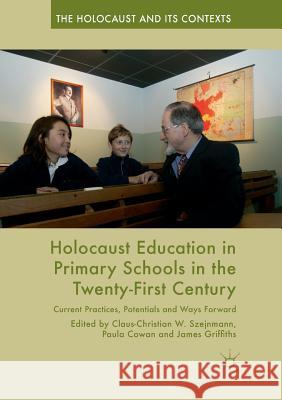Holocaust Education in Primary Schools in the Twenty-First Century: Current Practices, Potentials and Ways Forward » książka
topmenu
Holocaust Education in Primary Schools in the Twenty-First Century: Current Practices, Potentials and Ways Forward
ISBN-13: 9783030103156 / Angielski / Miękka / 2019 / 278 str.
Holocaust Education in Primary Schools in the Twenty-First Century: Current Practices, Potentials and Ways Forward
ISBN-13: 9783030103156 / Angielski / Miękka / 2019 / 278 str.
cena 342,14
(netto: 325,85 VAT: 5%)
Najniższa cena z 30 dni: 327,68
(netto: 325,85 VAT: 5%)
Najniższa cena z 30 dni: 327,68
Termin realizacji zamówienia:
ok. 22 dni roboczych
Dostawa w 2026 r.
ok. 22 dni roboczych
Dostawa w 2026 r.
Darmowa dostawa!
Kategorie:
Kategorie BISAC:
Wydawca:
Palgrave MacMillan
Seria wydawnicza:
Język:
Angielski
ISBN-13:
9783030103156
Rok wydania:
2019
Wydanie:
Softcover Repri
Numer serii:
000380718
Ilość stron:
278
Waga:
0.36 kg
Wymiary:
21.01 x 14.81 x 1.6
Oprawa:
Miękka
Wolumenów:
01
Dodatkowe informacje:
Wydanie ilustrowane











